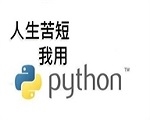yaml文件解析详解
前言
yaml文件是什么?yaml文件其实也是一种配置文件类型,相比较ini,conf配置文件来说,更加的简洁,操作也更加简单,同时可以存放不同类型的数据,不会改变原有数据类型,所有的数据类型在读取时都会原样输出,yaml文件依赖python的第三方库PyYaml模块
PyYaml安装
yaml文件处理需要借助python的第三方库,因此我们第一步需要安装
打开CMD执行命令: pip install PyYaml 注意:不要把Yaml写成Ymal

读yaml文件
yaml存字典并读取
config.yaml
cnblog: linux超 address: BeiJing Company: petrochina age: 18 now: 8.14 empty1: null empty2: ~
parseyaml.py
""" ------------------------------------ @Time : 2019/8/14 20:37 @Auth : linux超 @File : parseYaml.py @IDE : PyCharm @Motto: Real warriors,dare to face the bleak warning,dare to face the incisive error! @QQ : 28174043@qq.com @GROUP: 878565760 ------------------------------------ """ import yaml with open("config.yml", "r", encoding="utf8") as f: context = yaml.load(f, Loader=yaml.FullLoader) print("读取内容", context, type(context)) print(context["cnblog"], type(context["cnblog"])) print(context["age"], type(context["age"])) print(context["now"], type(context["now"]))
print(context["empty1"], type(context["empty1"]))
输出
读取内容 {'cnblog': 'linux超', 'address': 'BeiJing', 'Company': 'petrochina', 'age': 18, 'now': 8.14, 'empty1': None, 'empty2': None} <class 'dict'>
linux超 <class 'str'>
18 <class 'int'>
8.14 <class 'float'>
None <class 'NoneType'>
Process finished with exit code 0
从输出结果及yaml文件内容你可以看到,当前输出的内容是一个字典类型,yaml文件中存储的字符串输出仍是字符串类型,int型仍是int型等,存储None类型可以使用null,~符号以及None,这也是区别ini配置文件的地方,且文件内容使用[key:value]的形式定义,当然key和value也可以使用双引号修饰;上面的yaml文件只存储了一组数据,你也可以存放多组数据,看下面的实例
yaml存多组数据并读取
config.yaml
cnblog: linux超 address: BeiJing Company: petrochina age: 18 now: 8.14 --- name: linux超 gender: 男
parseyaml.py
""" ------------------------------------ @Time : 2019/8/14 20:37 @Auth : linux超 @File : parseYaml.py @IDE : PyCharm @Motto: Real warriors,dare to face the bleak warning,dare to face the incisive error! @QQ : 28174043@qq.com @GROUP: 878565760 ------------------------------------ """ import yaml with open("config.yml", "r", encoding="utf8") as f: context = yaml.load_all(f, Loader=yaml.FullLoader) print(context) for i in context: print(i)
输出
我是一个生成器 <generator object load_all at 0x01DDDAB0> {'cnblog': 'linux超', 'address': 'BeiJing', 'Company': 'petrochina', 'age': 18, 'now': 8.14} {'name': 'linux超', 'gender': '男'} Process finished with exit code 0
通过输出结果及yaml存储内容可以看出,当yaml文件存储多组数据在一个yaml文件中时,需要使用3个横杆分割,读取数据时需要使用load_all方法,而且此方法返回一个生成器,需要使用for循环迭代读取每一组数据下面再看一下yaml如何存储列表类型数据
yaml存储列表并读取
config.yaml
- linux超 - BeiJing - petrochina - 18 - 8.14
parseyaml.py
""" ------------------------------------ @Time : 2019/8/14 20:37 @Auth : linux超 @File : parseYaml.py @IDE : PyCharm @Motto: Real warriors,dare to face the bleak warning,dare to face the incisive error! @QQ : 28174043@qq.com @GROUP: 878565760 ------------------------------------ """ import yaml with open("config.yml", "r", encoding="utf8") as f: context = yaml.load(f, Loader=yaml.FullLoader) print("读取内容", context, type(context))
输出
读取内容 ['linux超', 'BeiJing', 'petrochina', 18, 8.14] <class 'list'> Process finished with exit code 0
当yaml文件存储列表数据时,需要使用一个横杠[- 元素]表示为列表的一个元素,除了列表以外还可以存储元组,或者说支持强制类型转换
yaml存储元组并读取
config.yml
--- !!python/tuple # 列表转成元组 - 1 - 2 - 3 --- age: !!str 18 # int 类型转换为str
parseyaml.py
""" ------------------------------------ @Time : 2019/8/14 19:46 @Auth : linux超 @File : parseYaml.py @IDE : PyCharm @Motto: Real warriors,dare to face the bleak warning,dare to face the incisive error! @QQ : 28174043@qq.com @GROUP: 878565760 ------------------------------------ """ import yaml with open("./config.yml", "r", encoding="utf-8") as f: context = yaml.load_all(f, Loader=yaml.FullLoader) for i in context: print(i)
输出
(1, 2, 3) {'age': '18'} Process finished with exit code 0
yaml文件使用两个!!号可以对数据进行类型转换,但是在我看来感觉没有用,当然可能我没遇见过需要做类型转化的情况;你还可以像下面这样存放更加复杂的数据,比如字典嵌套字典及列表
config.yaml
info: - user: username: linux超 password: linuxxiaochao company: first: petrochina second: lemon teacher
parseyaml.py
""" ------------------------------------ @Time : 2019/8/14 20:37 @Auth : linux超 @File : parseYaml.py @IDE : PyCharm @Motto: Real warriors,dare to face the bleak warning,dare to face the incisive error! @QQ : 28174043@qq.com @GROUP: 878565760 ------------------------------------ """ import yaml with open("config.yml", "r", encoding="utf8") as f: context = yaml.load(f, Loader=yaml.FullLoader) print("读取内容\n", context, type(context))
输出
读取内容 {'info': [{'user': {'username': 'linux超', 'password': 'linuxxiaochao'}}], 'company': {'first': 'petrochina', 'second': 'lemon teacher'}} <class 'dict'> Process finished with exit code 0
小结
实际工作中大概就是存储字典,列表,或者相互嵌套的数据较常见,那么在存储和读取时需要掌握以下几点
1.存储字典时,以[key:value]的形式定义
2.存储列表时,需要使用[- 元素]表示列表
3.存储多组数据时,需要每组数据之间使用3个横杠-分割分割
4.数据嵌套时,需要注意缩进,和编写python代码的缩进规则相同,唯一不同是,yaml中的缩进只要统一即可不需要指定缩进多少
5.读取一组数据时,直接使用load(stream, loader)方法, 读取多组数据时需要使用load_all(stream, loader)方法,此方法返回的是一个生成器,需要使用for循环读取每一组数据,还需要注意两个方法中的最好像我代码中一样传递loader参数为FullLoader,否则会报Warnning
写yaml文件
向yaml文件中写数据就比较简单了,直接使用dump方法和dump_all方法即可,无论多复杂的数据都可以直接写入,看实例
dump写入一组数据
""" ------------------------------------ @Time : 2019/8/14 19:46 @Auth : linux超 @File : parseYaml.py @IDE : PyCharm @Motto: Real warriors,dare to face the bleak warning,dare to face the incisive error! @QQ : 28174043@qq.com @GROUP: 878565760 ------------------------------------ """ import yaml response = { "status": 1, "code": "1001", "data": [ { "id": 80, "regname": "toml", "pwd": "QW&@JBK!#&#($*@HLNN", "mobilephone": "13691579846", "leavemount": "0.00", "type": "1", "regtime": "2019-08-14 20:24:45.0" }, { "id": 81, "regname": "toml", "pwd": "QW&@JBK!#&#($*@HLNN", "mobilephone": "13691579846", "leavemount": "0.00", "type": "1", "regtime": "2019-08-14 20:24:45.0" } ], "msg": "获取用户列表成功" } try: with open("./config.yml", "w", encoding="utf-8") as f: yaml.dump(data=response, stream=f, allow_unicode=True) except Exception as e: print("写入yaml文件内容失败") raise e else: print("写入yaml文件内容成功")
生成的yaml文件内容
code: '1001' data: - id: 80 leavemount: '0.00' mobilephone: '13691579846' pwd: QW&@JBK!#&#($*@HLNN regname: toml regtime: '2019-08-14 20:24:45.0' type: '1' - id: 81 leavemount: '0.00' mobilephone: '13691579846' pwd: QW&@JBK!#&#($*@HLNN regname: toml regtime: '2019-08-14 20:24:45.0' type: '1' msg: 获取用户列表成功 status: 1
dump_all写入多组数据
""" ------------------------------------ @Time : 2019/8/14 19:46 @Auth : linux超 @File : parseYaml.py @IDE : PyCharm @Motto: Real warriors,dare to face the bleak warning,dare to face the incisive error! @QQ : 28174043@qq.com @GROUP: 878565760 ------------------------------------ """ import yaml response = { "status": 1, "code": "1001", "data": [ { "id": 80, "regname": "toml", "pwd": "QW&@JBK!#&#($*@HLNN", "mobilephone": "13691579846", "leavemount": "0.00", "type": "1", "regtime": "2019-08-14 20:24:45.0" }, { "id": 81, "regname": "toml", "pwd": "QW&@JBK!#&#($*@HLNN", "mobilephone": "13691579846", "leavemount": "0.00", "type": "1", "regtime": "2019-08-14 20:24:45.0" } ], "msg": "获取用户列表成功" } info = { "name": "linux超", "age": 18 } try: with open("./config.yml", "w", encoding="utf-8") as f: yaml.dump_all(documents=[response, info], stream=f, allow_unicode=True) except Exception as e: print("写入yaml文件内容失败") raise e else: print("写入yaml文件内容成功")
生成的yaml文件内容
code: '1001' data: - id: 80 leavemount: '0.00' mobilephone: '13691579846' pwd: QW&@JBK!#&#($*@HLNN regname: toml regtime: '2019-08-14 20:24:45.0' type: '1' - id: 81 leavemount: '0.00' mobilephone: '13691579846' pwd: QW&@JBK!#&#($*@HLNN regname: toml regtime: '2019-08-14 20:24:45.0' type: '1' msg: 获取用户列表成功 status: 1 --- age: 18 name: linux超
小结
1.写入一组数据直接使用dump方法或者dump_all方法也可
2.写入多组数据只能使用dump_all方法
3.写入数据时最重要的一点需要注意:如果你的数据包含中文,dump和dump_all 方法需要添加allow_unicode=True参数,否则中文写入后不会正常显示
总结
1.yaml存储数据规则-多组数据使用---分割,数据嵌套时注意缩进,存储字典使用[key: value]的形式,存储列表使用[- 元素]的形式,使用load读一组数据,使用load_all 可以读多组数据
2.yaml文件写入一组数据直接使用dump方法,写入多组数据使用dump_all方法,注意写入数据带中文,需要指定参数allow_unicode=True
----------------------------真正的勇士, 敢于直面惨淡的Warning、 敢于正视淋漓的Error--------------------------
版权声明
出处: 博客园Linux超的技术博客--https://www.cnblogs.com/linuxchao/
您的支持是对博主最大的鼓励,感谢您的认真阅读
本文版权归作者所有,欢迎转载,但未经作者同意必须保留此段声明, 且在文章页面明显位置给出原文连接,否则保留追究法律责任的权利。
作者: Linux超

 yaml文件是什么?yaml文件其实也是一种配置文件类型,相比较ini,conf配置文件来说,更加的简洁,操作也更加简单,同时可以存放不同类型的数据,不会改变原有数据类型,所有的数据类型在读取时都会原样输出,yaml文件依赖python的第三方库PyYaml模块
yaml文件是什么?yaml文件其实也是一种配置文件类型,相比较ini,conf配置文件来说,更加的简洁,操作也更加简单,同时可以存放不同类型的数据,不会改变原有数据类型,所有的数据类型在读取时都会原样输出,yaml文件依赖python的第三方库PyYaml模块

 浙公网安备 33010602011771号
浙公网安备 33010602011771号